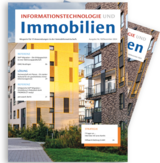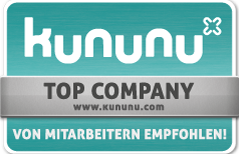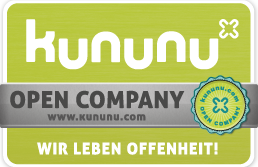Spotlight on processes to help companies look forward

Five becomes one
TAG is one of the five largest cross-regional housing companies in Germany and, with its portfolio of approximately 80,000 apartments in 300 locations, primarily invests in northern and eastern Germany.
With the integration of Colonia Real Estate, DKB Immobilien and TLG Wohnen, the company experienced strong growth and was thus faced with the challenge of integrating the various different processes into a standardised IT platform.
For this purpose, the existing ERP solutions had to be replaced with an overarching, fully functionally integrated ERP system. “It was clear to us at a very early stage that we not only wanted to create a consistent data model, but also bring all the processes from the company workflows together in a single process landscape,” says Albrecht Hempel, head of strategic property management, describing the requirements of the project.
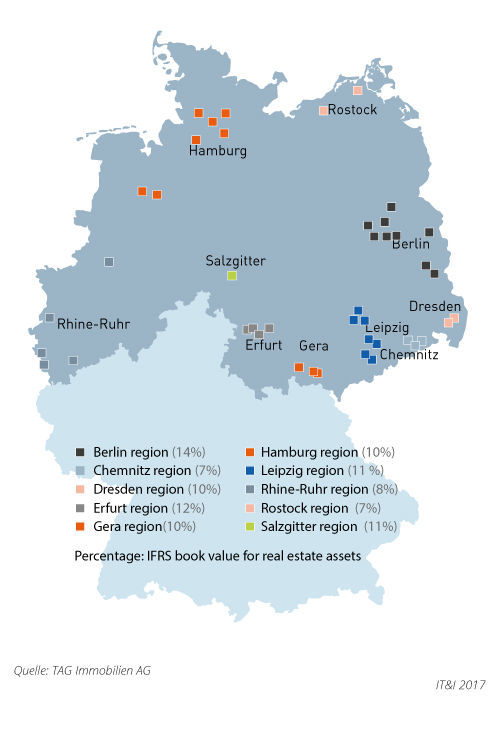
Figure 1: Overview of locations – the organisational structure ensures comprehensive, decentralised management of TAG residential property. A central shared service centre also provides operational assistance to the regions.
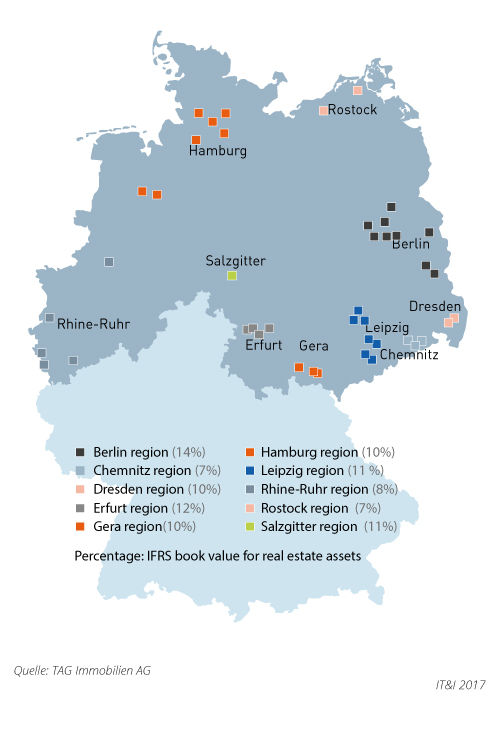 Figure 1: Overview of locations – the organisational structure ensures comprehensive, decentralised management of TAG residential property. A central shared service centre also provides operational assistance to the regions. |
Thus, before the switch to the new system, the contents and responsibilities for the main business processes were redefined and recorded in a process manual. “We viewed the launch of the ERP system as an opportunity for a change of concept – a chance to rebuild ‘on pastures new’ so to speak – and we made use of this opportunity,” Hempel continues. The decision was ultimately made for SAP® and PROMOS.GT. The SAP technology creates an ideal basis for the dynamic growth of TAG and the company’s strategic reach. The PROMOS easysquare workflow solution provides the required add-on: “Among the reasons we chose PROMOS was because their process tool can implement our requirements – be it mapping processes or integrating a previously defined role concept for the various tasks into the system,” says Ina Hüther, head of ERP systems and data management, explaining the choice.
The first specific business processes were already mapped at the time of the launch in 2014 and continue to be continuously enhanced today.
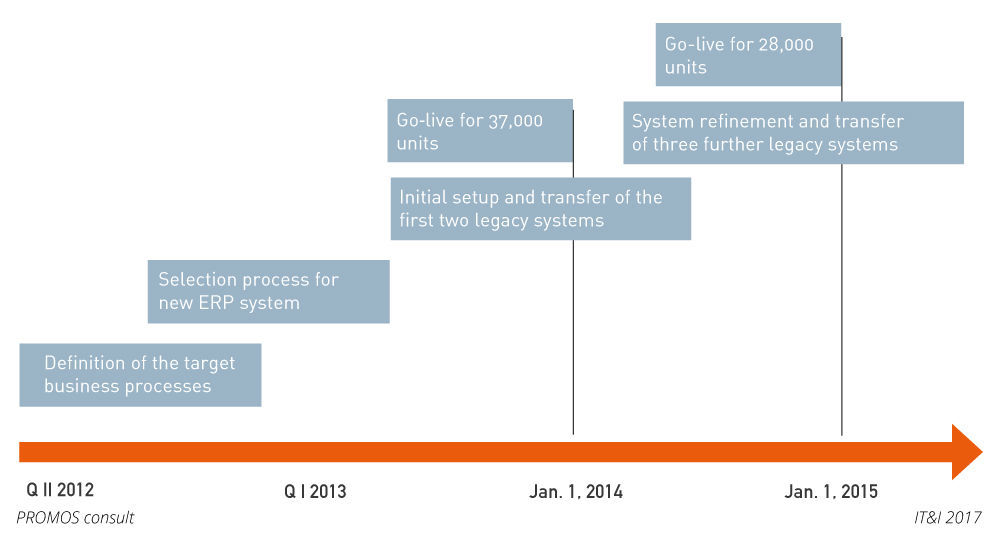
Figure 2: SAP® implementation 2013 to 2015: the new ERP system at TAG was introduced in two phases.
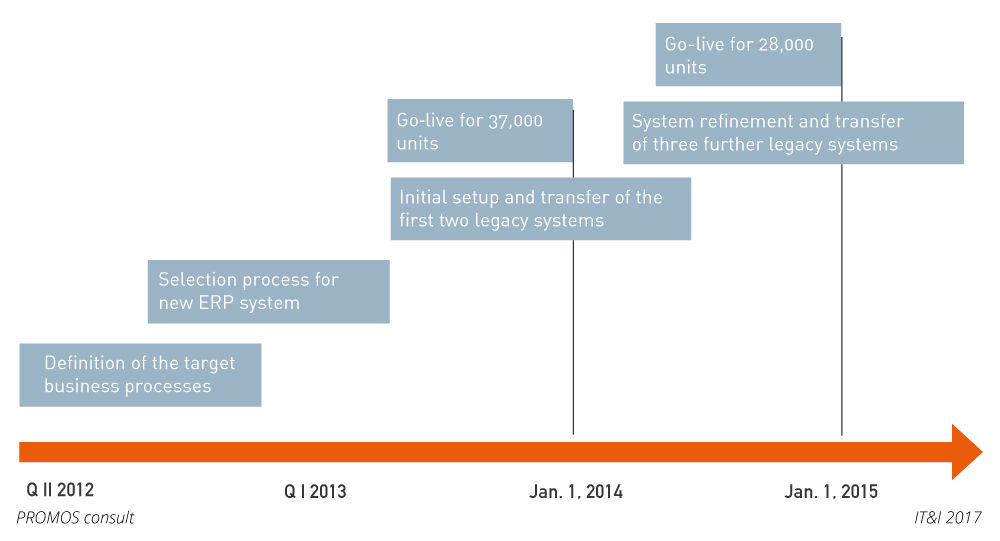 Figure 2: SAP® implementation 2013 to 2015: the new ERP system at TAG was introduced in two phases. |
You can’t do everything at once, so where to start?
TAG decided which process to develop and map in easysquare first based on the greatest measurable added value. The primary focus here was on increasing efficiency, quality and transparency. As in almost every company, the most comprehensive process is the billing run, as almost every employee is involved in this process. In addition, due to the decentralised structure at TAG, use of internal post (for sending invoices) took up a great deal of time and also resulted in the risk of invoices being lost. At the same time, almost every employee counted checking and releasing invoices among their day-to-day tasks, meaning it was possible to achieve the greatest possible impact on efficiency by mapping the process in the ERP system and making use of the automation effects that resulted from this. Implementing the invoice workflow for mapping vendor invoices and credit notes as the first process was therefore the obvious choice. Preliminary posting, account assignment and release of documents along with the subsequent automated posting were thus covered in PROMOS.GT in combination with sophisticated processor finding. The process was combined with scanning at an early stage and a readout of the invoice parameters.
In parallel to the invoicing workflow, a release process was developed for orders relating to maintenance and investments. The day-to-day workload and involvement of employees here is similarly extensive to the invoice workflow. To ensure that the process implementation achieved optimum added value, particularly with regard to transparency, the budget check and presentation of budget utilisation were integrated directly into this process.
Based on the aforementioned decision criteria, further processes were implemented at the company in the two years that followed. These include the service entry sheet release process (combined with implementation of a craftsmen’s interface), a workflow to show intercompany postings, a workflow for utility bills (mass invoices) and a ticket system including an associated completion process. In parallel to this, processes for recording and processing instalment payments, charging-on of costs and deposit dissolution were implemented in the operational property management and accounts receivable accounting interfaces.
Always maintain a complete overview
The full potential of digital process controlling is exploited when it is possible to jump to other applications while the work progress and all relevant information remain visible at a glance. To this end, upstream or downstream processes including the transfer of information between the processes must always be taken into account.
In the case of TAG, this worked perfectly for the charging-on of costs. Complex interdependencies between individual processes can also be mapped using easysquare workflow. Thanks to what is known as a parent–child process logic, subsequent processes whose content is part of a higher-level business process are triggered automatically. The charging-on of costs process implemented at TAG also reflects this. The charging-on of costs to tenants is triggered, for example, by upstream processes such as the invoice workflow or the service entry sheet release process. To achieve this, each of the processes was implemented as a separate attribute. The attribute specifies which transactions should be charged on to tenants or third parties and which should not.
In addition, in the charging-on of costs process, a handover of all account assignment information was implemented on the SAP® preliminary posting screen for the first time. This makes the preliminary posting process much easier and has also eliminated sources of error. At the same time, correspondence for tenants or third parties can be generated from within the process. This correspondence can then access information that is available in the process.
Ina Hüther, head of ERP systems and data management
Quality is more important than time
“Properly thinking through the workflows, allowing process loops and considering the integration of downstream and future processes when implementing new processes all proved worthwhile. In this way, we could achieve a much higher degree of automation and significantly better quality,” says Hüther, describing the considerably improved process efficiency.
A further basis for successful implementation was integrating all involved parties in process development at an early stage. This allowed tests to be outsourced in the form of pilots. Thanks to the decentralised organisational structure, it is possible to perform checks within the company in a test region with just 10,000 accounting entities, for example. The experience from this real simulation is then used to optimise the process before it is rolled out to the entire company. As a result, the solution is sophisticated and well accepted by users.
Cutting out manual initiation of processes also contributes to a reduction in sources of error, avoiding cases where the start of a process is forgotten or an incorrect reference object specified. Moreover, previously defined triggers simplify subsequent interweaving of processes, facilitating the design of a complex process landscape.
Time for optimisation
In summary, the implementation of a highly modern, comprehensive process landscape resulted in clear added value for the company. Digital networking of locations and workflows via a standardised IT infrastructure improves quality standards and the quantity of all processes. All procedures are now documented, saved in the electronic records and remain traceable at all times. In addition, capacity can now be managed flexibly across locations. “Thanks to the new system support, upcoming tasks can now be processed across locations without employees having to travel,” Hüther explains.
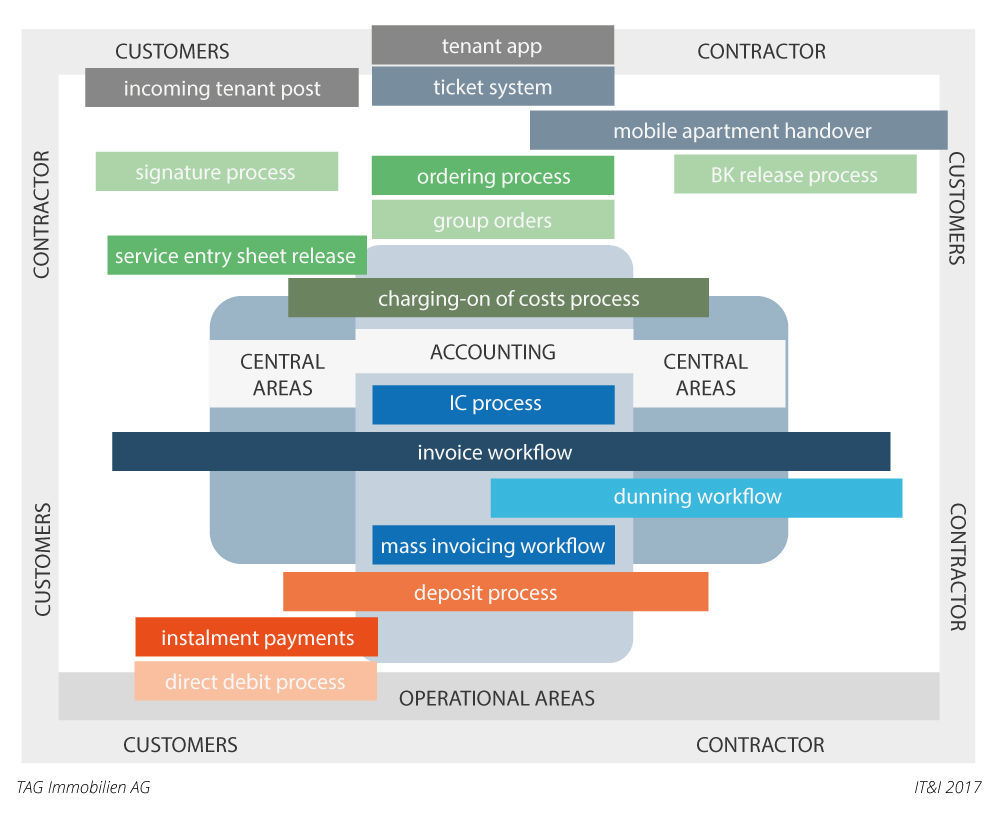
Figure 3: Development of a process landscape: overview of the process landscape implemented at TAG and a look ahead to further developments.
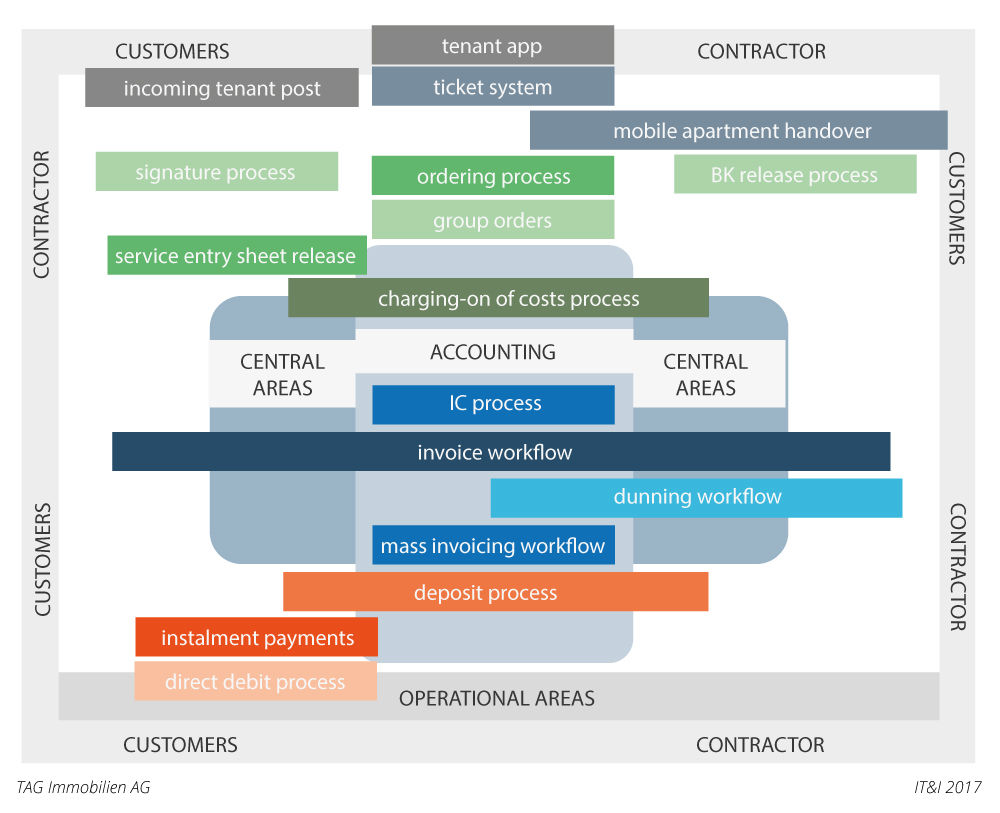 Figure 3: Development of a process landscape: overview of the process landscape implemented at TAG and a look ahead to further developments. |
A solid technological foundation has been laid for the future, which supports TAG in its digitisation strategy and provides sufficient innovation potential for enhancements. The company is planning to extend the solution from internal to customer processes on a step-by-step basis (Figure 3). Currently, additions relating to the ticket system, the launch of a tenant app, organisation of incoming post (early scanning for tenant mail) and a mobile residential property inspection process are on the agenda.
redaktion@openpromos.de
